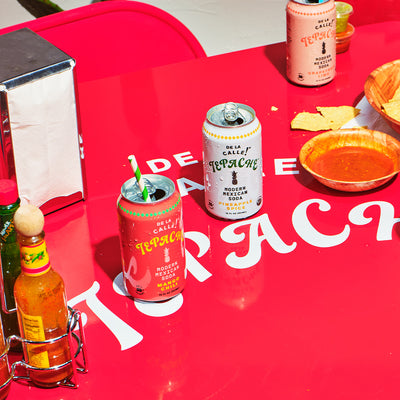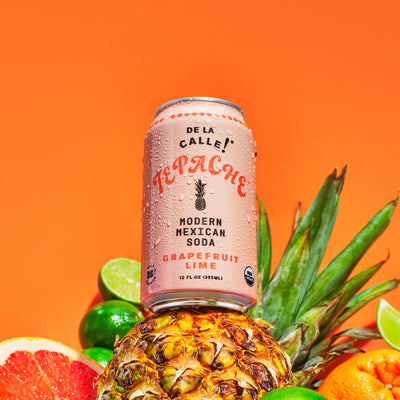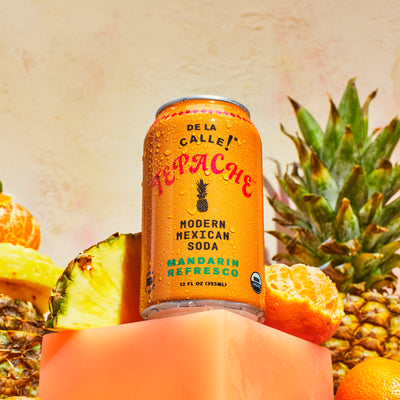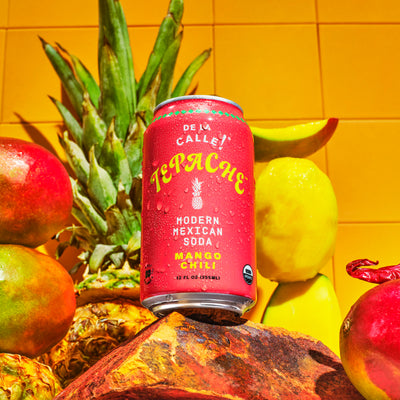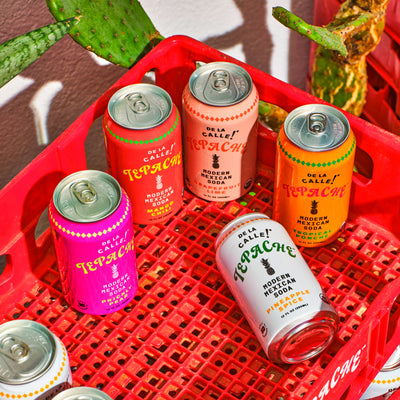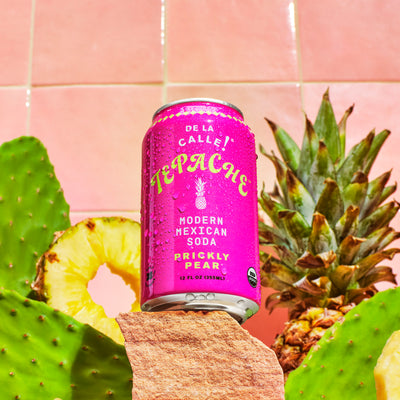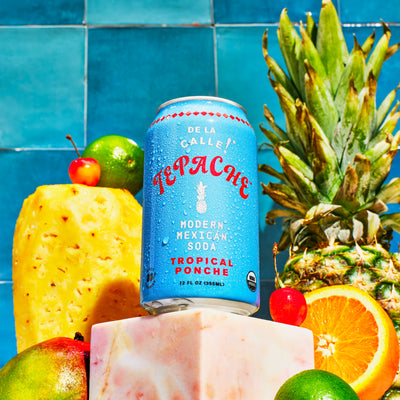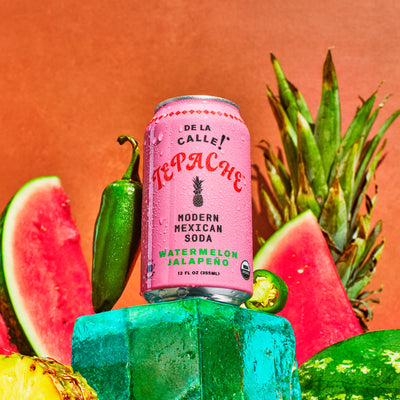Fermented Recipes: Healthy & Delicious Drinks

There are numerous health benefits to fermented drinks and foods. They can improve food digestibility, provide you with essential vitamins, reduce anti-nutrients, improve gut health, and boost your immune system with their probiotic qualities.
The best part? They’re delicious, too! Your fermented food options include everything from fermented vegetable recipes like sour pickles in brine, peppers, and cauliflower, to a sourdough starter culture. There are also tons of fermented sauces and condiments out there that you can try.
You can also decide if you want to go for lacto-fermentation or if you’re sticking with pickling or something else. Lacto-fermentation, in particular, makes use of the lactobacillus bacteria, which produces lactic acid.
Check out this article for several recipes for healthy and tasty fermented beverages.
Tepache
One delicious fermented drink that’s easy to make at home is tepache. Now you might be asking yourself, what exactly is tepache?
Similar to kombucha, tepache is made from fermented pineapple rinds and core. It is full of nutrients and naturally sweetened, making it a great substitute for soda. Traditionally sold on the streets of Mexico, tepache has a deep, rich history and dates back to pre-Columbian times.
To make tepache, you’ll need the following ingredients: 1 pineapple, 1 cup piloncillo or sugar, 2 quarts of filtered water, a pitcher or pot, and a cheesecloth. If you want to add flavor to your tepache, you can also get a cinnamon stick, cloves, or any other spices you think will blend well with the pineapple flavor.
To prep, you’ll want to rinse and cut the pineapple, setting the fruit aside. Next, place the pineapple rinds and core along with the piloncillo, anything else you’re using to add flavor, and water in the pitcher. Next up, fermentation! Cover your pot loosely using cheesecloth or plastic wrap. You can let it ferment for up to 24 hours. After it is done fermenting, strain your tepache and put it into a pitcher with ice. Make sure to test your tepache for sweetness.
Kombucha
Perhaps the most common fermented beverage is kombucha, an ancient beverage that has its origins in China. To make kombucha at home, you’ll need a SCOBY. The term SCOBY stands for “symbiotic culture of bacteria and yeast.” You can either make a SCOBY at home or purchase one from someone else brewing kombucha. Essentially, your SCOBY provides bacteria and yeast, which ferments the sweet tea used to make kombucha.
Once you have a SCOBY, you’ll need clean water, white sugar, black or green tea, and unflavored kombucha to make your first batch of homemade kombucha. First, bring 14 cups of clean water to a boil in a pan. Remove the water from the heat and add 1 cup of sugar. Add 8 bags of green or black tea to the water and allow it to steep. Once the water is at room temperature, it is ready for the next step.
In a large jar, pour the sweetened tea and two cups of unflavored kombucha. Gently place your SCOBY into the jar and cover it with a tightly woven cloth rather than a lid. Secure the cloth with a rubber band. Place the jar in a dark, room temperature place. You can let the mixture ferment for anywhere from 6 to 10 days. Your kombucha will be less sweet the longer it is allowed to ferment.
If you plan on making more kombucha in the future, save two cups from the bath to use as a starter for your next fermentation.
Kefir
Kefir is another fermented beverage that is delicious and packed with gut-friendly probiotics. However, unlike tepache and kombucha, it has a milk base. Kind of like a thin yogurt, kefir is a tasty way to give your gut a boost.
Instead of a SCOBY, the fermentation process in kefir is fueled by kefir grains. These grains (which are not actually grains) contain all of the yeasts and bacteria that initiate fermentation and turn milk into kefir. Given that the kefir grains are not actual grains, kefir is safe for people who are gluten-free. You can get kefir grains online and, once you buy them, you’ll never need to buy them again.
The best milk to use for making homemade kefir is whole, pasteurized milk. Although you can transition to lower fat and raw milk as time goes on, it is best to start with whole milk because the grains respond best to it.
Other than milk, you’ll need a large glass or ceramic jug, a wooden or plastic slotted spoon, fine woven cloth, a large non-metal bowl, fine non-metal colander, and a jar for your finished product.
To begin making kefir, clean all of your tools extremely well. Make sure to avoid antimicrobial soaps that may leave a residue that will kill the beneficial bacteria in the kefir grains. Add one tablespoon of the kefir grains and 4 cups of whole milk to the large jug. Cover the jug with the woven cloth. Leave the jug in a warm, dark spot for roughly 24 hours.
Once your kefir has slightly thickened and smells fermented, it is done. Sometimes, your kefir may separate, which is fine. If this happens, use more milk next time or let it ferment for less time. After fermentation, place your large bowel under the fine colander. Pour the kefir into the colander and stir with a spoon to sift it through. The kefir grains will be leftover.
If you want to make another batch in the future, rinse out the large jar you used for fermentation and place the grains back into it. Add 4 more cups of milk to restart the process again. Put your finished kefir into a sealable container. It can be stored in the fridge for about two weeks.
Fermented Lemonade
Fermented lemonade has a tangy taste and a slightly bubbly texture. Although it is not carbonated like soda, it does have small bubbles that make it a good addition to alcoholic drinks. Unlike most probiotic drinks available in the supermarket, this fermented lemonade is not pasteurized, which means that it is packed with live bacteria that will help your gut stay healthy.
To make fermented lemonade, you’ll need filtered water, fresh-squeezed lemon juice, organic evaporated cane sugar, and liquid whey. It’s important to only use fresh-squeezed lemon juice because store-bought juice may contain preservatives that will stop the lemonade from properly fermenting.
Whey is the watery liquid left behind when milk is curdled to make cheese. This protein-rich substance is also a component of yogurt. You can separate whey from yogurt by straining the yogurt through several layers of cheesecloth that are placed over a fine-mesh sieve.
In a 2-quart jar, add 6 ½ cups of water, ½ cup of lemon juice, ½ cup of sugar, and a ½ cup of liquid whey. Shake the mixture well to dissolve the sugar. Let it ferment for two days at room temperature, then place it in the refrigerator. Usually, this beverage tastes best after a week and a half.
Conclusion
Fermenting drinks at home is an easy, cost-effective way to make delicious, nutritious beverages. If you want a fermented drink with a subtle, citrusy taste that works well in mocktails and cocktails, you can make tepache.
For a fermented drink with a stronger, more funky flavor, try fermenting tea and making kombucha. If you’re looking for a tasty breakfast beverage, you can make kefir. Another slightly sweet fermented beverage you can make at home is fermented lemonade.
Although fermented beverages are delicious, don’t stop your fermentation experiments with drinks! You can ferment vegetables like cabbage, cucumbers, carrots, beets, radish, and more to make delicious snacks like sauerkraut and kimchi. You can also try baking sourdough bread or making your own yogurt.
Regardless of what you try to ferment, have fun mixing flavors and playing with the process until you have the perfect fermented foods and drinks!
Sources:
The Microbiota and Health Promoting Characteristics of the Fermented Beverage Kefir | NCBI

